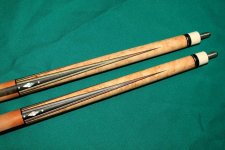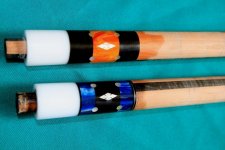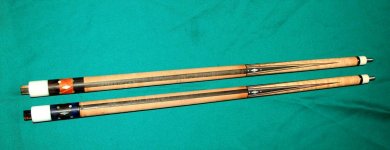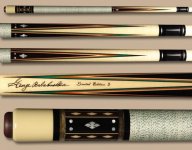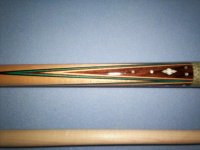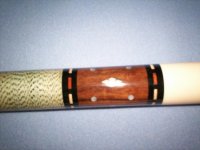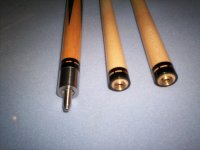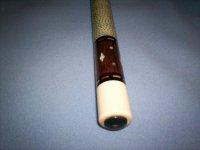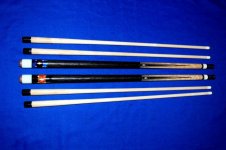I see a lot of "inspired by" threads, copies, tributes, etc. But what exactly defines a Balabushka style? Is it strictly 4 points with 4 veneers? Any specific colors? Specific joints? Points? Inlays? Always maple forarms and ebony butt sleeves with MOP inlays?
Does this mean that George Balabushka pretty much made the same cue over and over with only minor cosmetic changes? Did they usually have a standard tip diamter? Were they generally all around 57.5" in length? Did they vary in weight? Did he built to order, or just build and sell?
I have used the Google button, but only find cursory general biographic information and the occasional link with one for sale, or was sold.
I LOVE that Balabushka look. or I guess you could call it a "classical" cue style. I know that by today's standards it's a fairly safe, uninspired style, but for me I always loved it. I was just curious as to how specific the term "Balabushka style" was.
Does this mean that George Balabushka pretty much made the same cue over and over with only minor cosmetic changes? Did they usually have a standard tip diamter? Were they generally all around 57.5" in length? Did they vary in weight? Did he built to order, or just build and sell?
I have used the Google button, but only find cursory general biographic information and the occasional link with one for sale, or was sold.
I LOVE that Balabushka look. or I guess you could call it a "classical" cue style. I know that by today's standards it's a fairly safe, uninspired style, but for me I always loved it. I was just curious as to how specific the term "Balabushka style" was.
